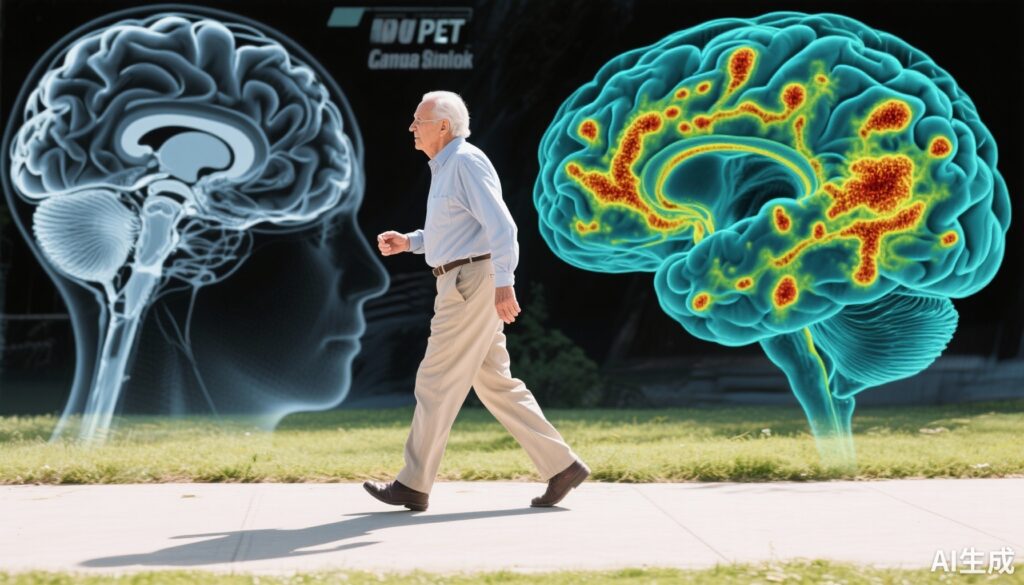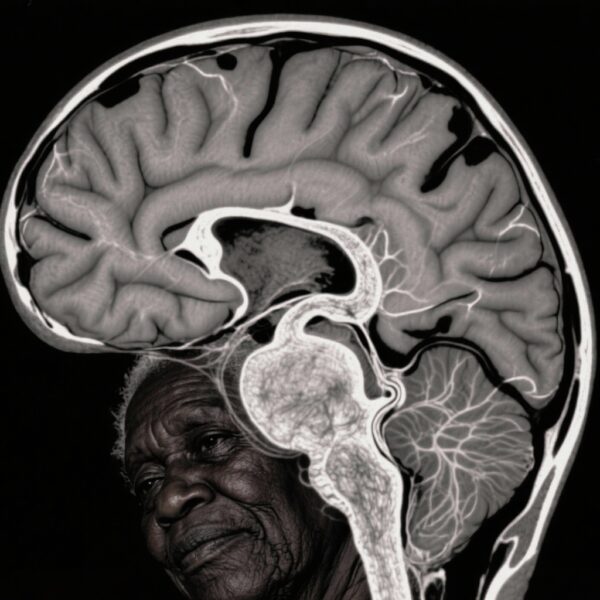Highlight
- Long-duration and high-intensity lifetime walking is linked to reduced accumulation of amyloid-β (Aβ), a hallmark of Alzheimer’s disease (AD), over 4 years.
- The protective association was significant only when walking was initiated early in life, emphasizing timing in lifestyle interventions.
- No significant effects were observed on tau pathology, neurodegeneration markers, or white matter hyperintensity (WMH) volumes.
- Findings underline the importance of promoting sustained, vigorous physical activity as a modifiable risk factor to potentially delay or prevent AD pathology.
Study Background
Alzheimer’s disease (AD) is a progressive neurodegenerative disorder characterized pathologically by extracellular amyloid-β (Aβ) plaques and intracellular neurofibrillary tau tangles leading to neurodegeneration. Given its rising prevalence with aging populations worldwide and lack of curative treatments, identifying modifiable lifestyle factors that can delay or mitigate AD pathology has become a major clinical and public health priority. Previous epidemiological studies have consistently associated greater physical activity, especially walking, with lower risk of cognitive decline and AD onset. Nevertheless, the underlying neuropathological mechanisms of this protective effect have remained poorly understood. This study by Kim et al. investigates how lifetime walking patterns—specifically intensity and duration—relate to longitudinal changes in AD-related brain pathologies, thus addressing a critical knowledge gap in disease prevention and pathophysiology.
Study Design
This research analyzed data from the Korean Brain Aging Study for the Early Diagnosis and Prediction of Alzheimer’s Disease (KBASE), a longitudinal cohort initiated in 2014 enrolling community-dwelling older adults and memory clinic attendees. A total of 151 participants underwent comprehensive baseline and 4-year follow-up neuroimaging assessments including positron emission tomography (PET) for Aβ and tau deposition, magnetic resonance imaging (MRI) for neurodegeneration markers and white matter hyperintensities (WMHs).
Lifetime walking was assessed via the Lifetime Total Physical Activity Questionnaire, quantifying both intensity and weekly duration. Participants were categorized into four groups combining intensity (high vs. low) and duration (short ≤360 min/week vs. long >360 min/week) of walking. The primary endpoints were longitudinal changes in brain Aβ and tau burden, neurodegeneration indices, and WMH volume.
Key Findings
Over the 4-year observation period, participants engaging in long-duration (>360 min/week) or high-intensity walking exhibited significantly less accumulation of Aβ on PET imaging compared to their counterparts with short-duration or low-intensity walking.
More specifically, the group combining high-intensity and long-duration walking demonstrated the greatest protective effect against Aβ accumulation. Intermediate combinations (e.g., long-duration but low-intensity, or high-intensity but short-duration) did not show significant differences compared to low-exposure groups, suggesting a threshold effect requiring both sustained duration and intensity.
Plots of the longitudinal associations (A-C) between walking groups and Aβ deposition: (A) walking duration group vs. Aβ deposition, (B) walking intensity group vs. Aβ deposition, (C) combined level walking group vs. Aβ deposition.
Importantly, this association was significant only in individuals who initiated habitual walking early in life rather than in late life, highlighting the critical timing window for intervention efficacy.
No significant correlations were observed between lifetime walking categories and changes in tau pathology, neurodegeneration measures, or WMH volumes. This delineates a more specific mechanistic link between physical activity and amyloid clearance or production pathways rather than downstream neurodegenerative processes or vascular brain changes.
Expert Commentary
This study provides robust longitudinal evidence supporting long-term, high-intensity walking as a modifiable lifestyle factor potentially reducing cerebral amyloid accumulation, a key pathological hallmark of AD. The use of advanced PET/MRI neuroimaging in combination with validated lifetime physical activity questionnaires enhances the methodological rigor and biological relevance of the findings.
The absence of effects on tau or neurodegeneration suggests that physical activity may specifically target early amyloid pathology or amyloid-related clearance mechanisms rather than tau propagation or direct neuronal loss. The restriction of benefits to early life initiators aligns with emerging concepts of a prolonged preclinical phase in AD during which preventive strategies may yield maximal impact.
Limitations include the modest sample size, possible self-report biases in physical activity recall, and the observational nature precluding definitive causal inferences. Future larger, multicenter studies with more detailed activity measurements and mechanistic biomarkers are warranted.
Conclusion
Kim et al.’s longitudinal investigation underscores that lifetime walking characterized by long duration and high intensity is associated with reduced amyloid-β accumulation in older adults, potentially delaying or reducing AD risk. The findings highlight the importance of adopting and maintaining vigorous physical activity early in life as a feasible, low-cost intervention to modulate neuropathology.
Clinicians and public health practitioners should encourage sustained physical activity habits beginning in midlife or earlier to leverage neuroprotective effects against Alzheimer’s disease. Further research should also explore underlying biological mechanisms and assess whether exercise interventions can directly alter amyloid kinetics.
Funding and ClinicalTrials.gov
The study was conducted by the KBASE Research Group under grant support detailed in the original publication. ClinicalTrials.gov registration details were not provided.
References
Kim JW, Keum M, Byun MS, Yi D, Jeon SY, Jung JH, Kong N, Chang YY, Jung G, Ahn H, Lee JY, Kang KM, Sohn CH, Lee YS, Kim YK, Lee DY; KBASE Research Group. Lifetime walking and Alzheimer’s pathology: A longitudinal study in older adults. J Prev Alzheimers Dis. 2025 Aug;12(7):100203. doi: 10.1016/j.tjpad.2025.100203 IF: 7.8 Q1 . Epub 2025 May 16. PMID: 40382248 IF: 7.8 Q1 ; PMCID: PMC12321639 IF: 7.8 Q1 .




